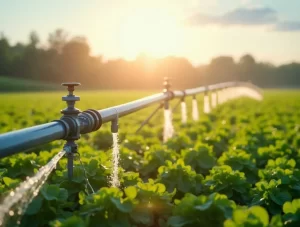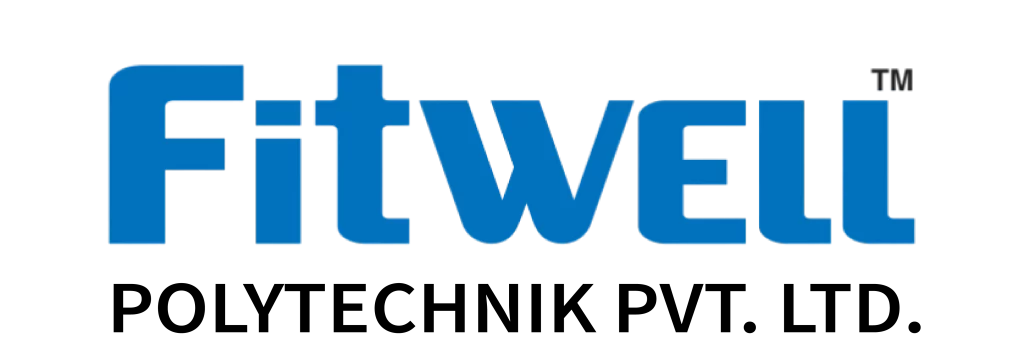CPVC Pipe Fittings vs. Metal: 25-Year Cost Breakdown for 2025

Introduction to 2025 Pipe Fittings Market Trends
The pipe fittings market continues to evolve in response to advancements in materials and changing industrial plumbing demands. In 2025, CPVC pipe fittings are gaining prominence due to their superior performance in high-temperature and corrosive environments, making them an essential solution for hot water plumbing. Decision-makers are turning to CPVC pipes fittings industrial plumbing applications as their durability and cost-efficiency become more apparent.
Insights from a comprehensive guide to CPVC fittings highlight the growing shift toward CPVC over traditional materials like metal, sparked by emerging trends such as reduced maintenance requirements compared to MDPE and simpler joining techniques. The demand for quality fittings in a plumbing system underscores this shift, particularly in understanding CPVC vs. uPVC differences for targeted applications.
Key market drivers include 5 reasons why CPVC pipes are the best choice for hot water plumbing, their proven corrosion resistance, and stability over time. Factors such as cost, ease of handling, and the top 10 advantages of using CPVC pipes for plumbing are influencing growth, positioning CPVC as the future of plumbing solutions. Numbered trends provide clarity on why CPVC remains competitive in sustainability and long-term value.
Overview of CPVC and Metal Pipe Fittings
Chlorinated Polyvinyl Chloride (CPVC) pipe fittings are a crucial aspect of modern plumbing systems, often highlighted in a CPVC pipe fittings guide for their durability and versatility. They are prominently used in industrial plumbing, especially for transporting hot and cold water. When compared to metal pipe fittings, CPVC fittings offer numerous advantages. These include corrosion resistance, a lightweight structure for easy installation, and compatibility with various piping systems. CPVC is specifically preferred for hot water plumbing, as detailed in 5 reasons why CPVC pipes are the best choice for hot water plumbing.
Metal fittings, often seen in traditional setups, provide strength and longevity but are prone to rust, scale formation, and high costs. CPVC outshines in cost-efficiency over time, as detailed in a comprehensive guide to CPVC fittings pipe fitters and joining techniques. Unlike uPVC, CPVC handles higher temperatures, offering additional benefits outlined in CPVC vs uPVC: understanding the differences and applications.
Quality fittings are essential in any plumbing system to ensure reliability, offering reduced maintenance demands versus traditional systems, paralleling observations from MDPE vs traditional piping maintenance. CPVC’s adaptability reinforces its potential as the future of plumbing, making it a superior choice backed by the top 10 advantages of using CPVC pipes for plumbing.
Price Trends of CPVC Pipe Fittings in 2025
The pricing landscape for CPVC pipe fittings is expected to show notable changes in 2025, influenced by global demand, advancements in manufacturing, and evolving market trends. A comparison of CPVC vs. UPVC fittings highlights CPVC’s superior performance in industrial plumbing systems, justifying its growing popularity despite its marginally higher cost.
Industry reports suggest that raw material costs for CPVC may see moderate increases, directly impacting the cost of industrial-grade fittings. However, CPVC’s longevity and low maintenance needs offer long-term savings, echoing findings from a comprehensive guide to CPVC fittings, pipe fitters, and joining techniques.
Increasing reliance on CPVC, especially in hot water plumbing, can be attributed to its proven thermal resistance and durability, as cited in the “5 Reasons Why CPVC Pipes Are the Best Choice for Hot Water Plumbing.” Buyers are advised to prioritize the importance of quality fittings in a plumbing system, ensuring systems operate efficiently over time.
Price Trends of Metal Pipe Fittings in 2025
In 2025, metal pipe fittings exhibit increased price volatility, driven by market dynamics such as fluctuating raw material costs and global supply chain challenges. Stainless steel, galvanized steel, and brass fittings are notably impacted by rising demand in industrial applications, where durability and temperature resistance are critical factors. Unlike alternatives highlighted in a comprehensive CPVC pipe fittings guide, the pricing for metals also reflects higher production costs linked to energy-intensive manufacturing processes.
Furthermore, advancements in industrial plumbing, alongside stricter sustainability mandates, have led suppliers to prioritize eco-friendly production methods, which influence costs. Industry experts emphasize that understanding metals’ maintenance demands compared to alternatives like CPVC can assist in long-term cost assessments.
Key Factors Influencing CPVC Pricing
Several critical factors shape the pricing of CPVC pipe fittings, as highlighted in any comprehensive cpvc pipe fittings guide designed for industrial plumbing.
- Raw Material Costs: The price of CPVC resin directly affects production costs, influencing market rates. Supply chain disruptions further amplify these costs.
- Market Demand: Rising adoption in sectors like hot water plumbing, where experts list 5 reasons why CPVC pipes are the best choice, drives demand and pricing.
- Technology in Manufacturing: Advancements in pipe fitters and joining techniques impact production efficiency and, consequently, consumer costs.
- Energy Costs: Manufacturing CPVC pipes and fittings requires consistent heating processes, making energy prices a determining factor.
- Regulatory Standards: Strict industrial safety standards raise production expenses, ensuring premium-quality CPVC over traditional materials like MDPE.
Understanding these factors underscores why CPVC pipes are the future of plumbing.
Key Factors Influencing Metal Pipe Pricing
Metal pipe pricing is influenced by several critical factors that can significantly impact costs in industrial and residential plumbing systems. Unlike CPVC pipe fittings, which are highlighted in “CPVC Pipe Fittings: A Comprehensive Guide”, metals are prone to price fluctuations due to material and market conditions.
- Material Type and Grade: Choices like stainless steel, copper, or ductile iron vary in price based on corrosion resistance, tensile strength, and durability.
- Market Demand and Supply: Global supply chain disruptions and resource scarcity influence metal prices.
- Manufacturing Process: Fabrication complexity directly affects production costs.
- Maintenance and Lifecycle Costs: Unlike CPVC, metals require higher upkeep due to corrosion, scaling, or wear and tear over time.
- Application-Specific Needs: Industrial environments like high-pressure settings demand premium grades, driving up prices.
These factors underscore why CPVC pipes are the future of plumbing across many sectors.
Comparison of Cost Effectiveness: CPVC vs. Metal
In evaluating the cost-effectiveness of materials for industrial plumbing, it becomes crucial to assess the long-term implications of CPVC pipe fittings and metal alternatives. CPVC pipes, highlighted in the “cpvc pipe fittings guide“, incur lower initial material and labor costs due to their lightweight and easy joining techniques, as detailed in “a comprehensive guide to cpvc fittings pipe fitters and joining techniques”. Metal systems, though durable, often lead to higher expenses in installation and regular maintenance. Additionally, CPVC requires minimal upkeep, unlike metal prone to corrosion and scaling. As described in the “top 10 advantages of using cpvc pipes for plumbing”, CPVC proves highly effective for both hot water systems and corrosive environments, supporting the belief that “why cpvc pipes are the future of plumbing”.
Durability and Longevity: Does Price Reflect Performance?
When comparing CPVC pipe fittings and metal counterparts, durability emerges as a key consideration. According to CPVC pipe fittings guides, CPVC offers superior resistance to corrosion, scaling, and chemical degradation, making it a popular choice in industrial plumbing. For high-temperature applications, insights from the 5 reasons why CPVC pipes are the best choice for hot water plumbing show CPVC withstands prolonged heat exposure without warping or weakening, unlike some metal fittings.
Metal pipes, by contrast, are subject to rust and leak risks over time, increasing maintenance demands. While initial costs of CPVC may appear lower, a comprehensive guide to CPVC fittings, pipe fitters, and joining techniques reveals its long lifespan offsets frequent replacements, proving cost-effective. Transitioning to CPVC reflects why CPVC pipes are the future of plumbing, with durability directly translating to financial savings over a 25-year span.
Environmental and Sustainability Considerations
When comparing CPVC pipe fittings and metal systems, environmental and sustainability aspects take center stage. According to a comprehensive guide to CPVC fittings, pipe fitters, and joining techniques, CPVC is manufactured with lower energy demands compared to metal. The material’s lightweight nature reduces transportation-related emissions, offering a clear advantage over heavy traditional alternatives like steel.
Additionally, CPVC’s resistance to corrosion eliminates harmful chemical leaching, a common concern cited in discussions around MDPE vs. traditional piping maintenance. Recycling opportunities for CPVC also contribute to its long-term sustainability. In contrast, metal systems—though recyclable—require energy-intensive smelting processes. These attributes underscore why CPVC pipes are the future of plumbing, particularly in industrial and hot water applications.
Market Recommendations for Contractors and Buyers in 2025
Contractors and buyers navigating plumbing system investments should take cues from evolving market preferences. CPVC pipe fittings, outlined in a comprehensive guide, increasingly dominate due to their superior durability, cost efficiency, and minimal maintenance in industrial plumbing. This trend is supported by the top 10 advantages of using CPVC pipes for plumbing, including resistance to corrosion and suitability for hot water applications, as noted in 5 reasons why CPVC pipes are the best choice for hot water plumbing.
When comparing CPVC vs. UPVC: understanding the differences and applications, contractors should recognize that CPVC offers better versatility in high-temperature environments. Buyers focused on MDPE vs. traditional piping: 32 maintenance should prioritize CPVC for its longer lifecycle and lower upkeep. Emphasizing the importance of quality fittings in a plumbing system, they must invest in systems where CPVC fittings, pipe fitters, and joining techniques align with future plumbing outlooks, supporting the assertion of why CPVC pipes are the future of plumbing.
Conclusion: Unveiling the Better Choice for Your Needs
When comparing CPVC pipe fittings and metal options, several critical factors come into play. CPVC solutions, as highlighted in a CPVC Pipe Fittings Guide, offer distinct advantages, especially for industrial plumbing and hot water applications. Among the top 10 advantages of using CPVC pipes for plumbing, corrosion resistance and thermal efficiency stand out. On the other hand, metal pipes present durability but often require higher maintenance costs over time.
Quality fittings significantly impact system longevity, regardless of material. From the comprehensive guide to CPVC fittings, pipe fitters, and joining techniques, CPVC remains unbeatable for long-term performance. Still, individual needs and budgets determine the ultimate choice. Both materials merit consideration.
Stay on the forefront of industry trends by checking out our latest content
Stay ahead with our latest content, designed to keep you informed on the newest industry trends and insights. Discover valuable updates that help you lead in your field.

Trusted uPVC Pipes Manufacturers for India’s Top Contractors
Introduction: The Surge in Demand for uPVC Pipes Among Top Contractors in India The construction and infrastructure sectors in India have witnessed a significant transition toward sustainable and long-lasting materials.

Top Innovations in Agricultural Pipe Fittings for Water Savings [2025]
Introduction to Agricultural Pipe Fittings and Water Sustainability Agricultural pipe fittings play a pivotal role in building efficient irrigation systems, crucial for modern farming practices. By exploring the versatility of

Expeart Tips from MDPE Pipe Fittings Manufacturers to Avoid Failures
Expeart Tips from MDPE Pipe Fittings Manufacturers to Avoid Failures Understanding MDPE Pipe Fittings: An Overview MDPE (Medium Density Polyethylene) fittings, used extensively in gas and water systems, offer strong,
Request a Free Consultation
Get personalized plumbing solutions with a free consultation from Fitwell.

